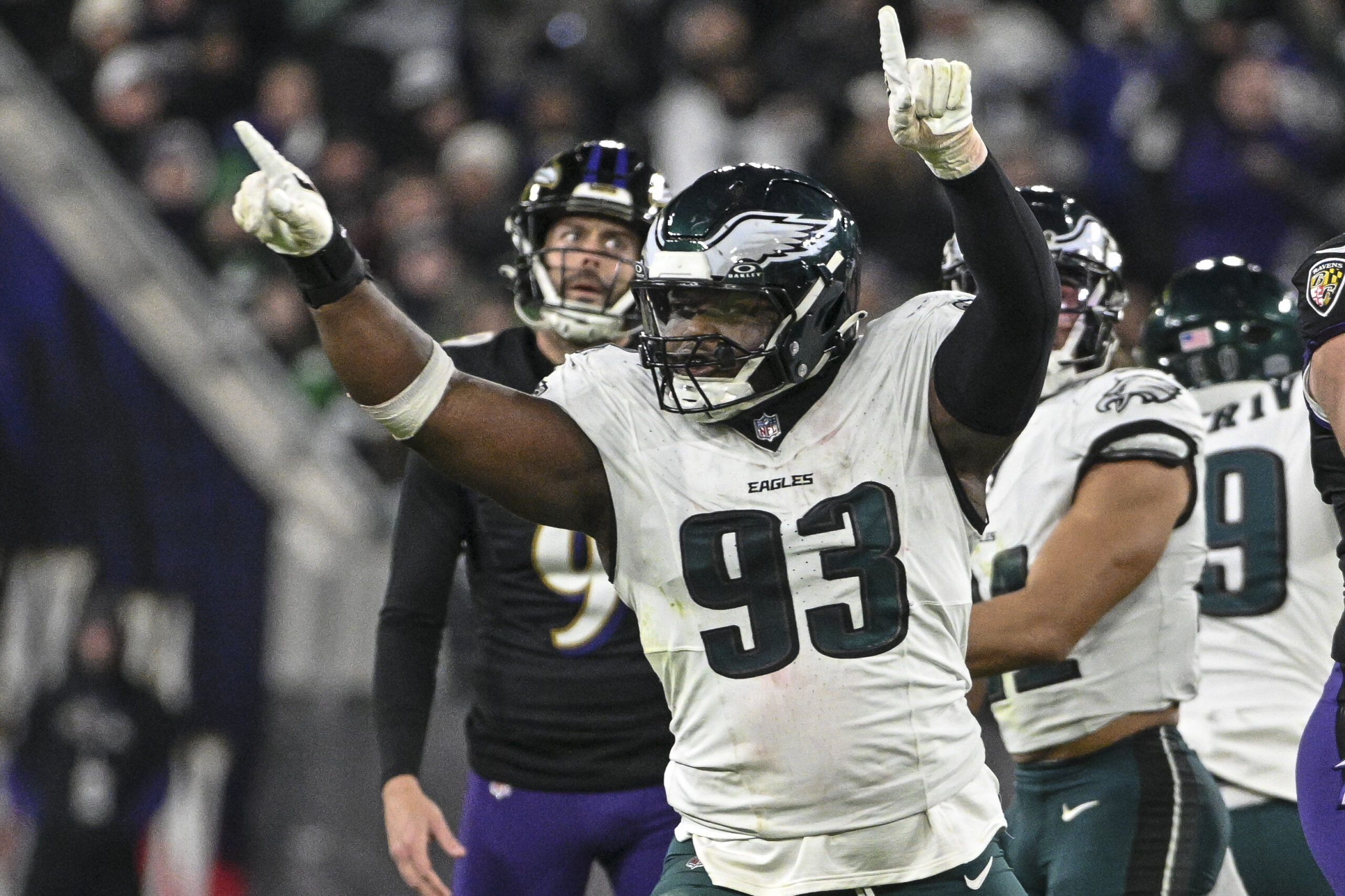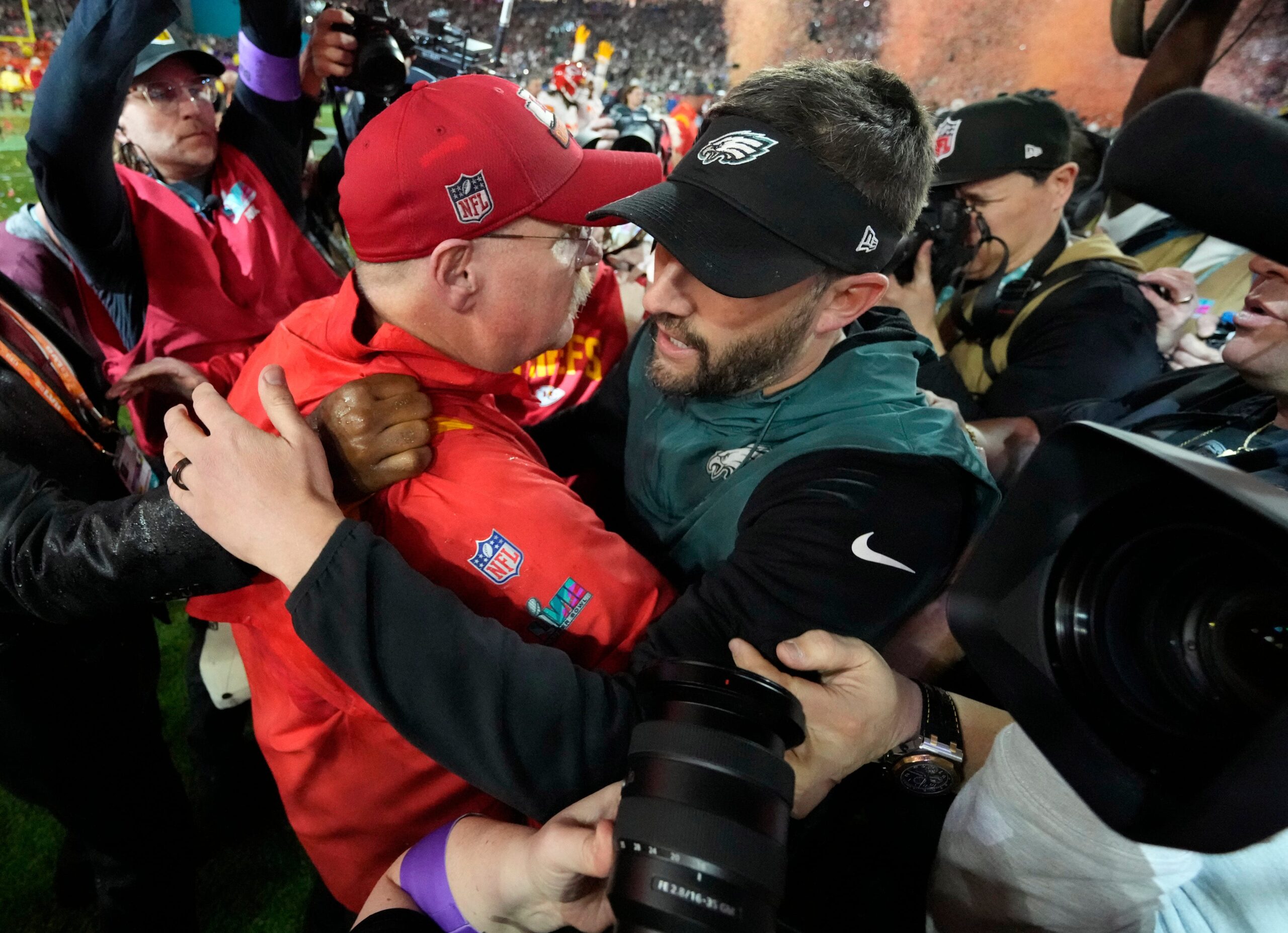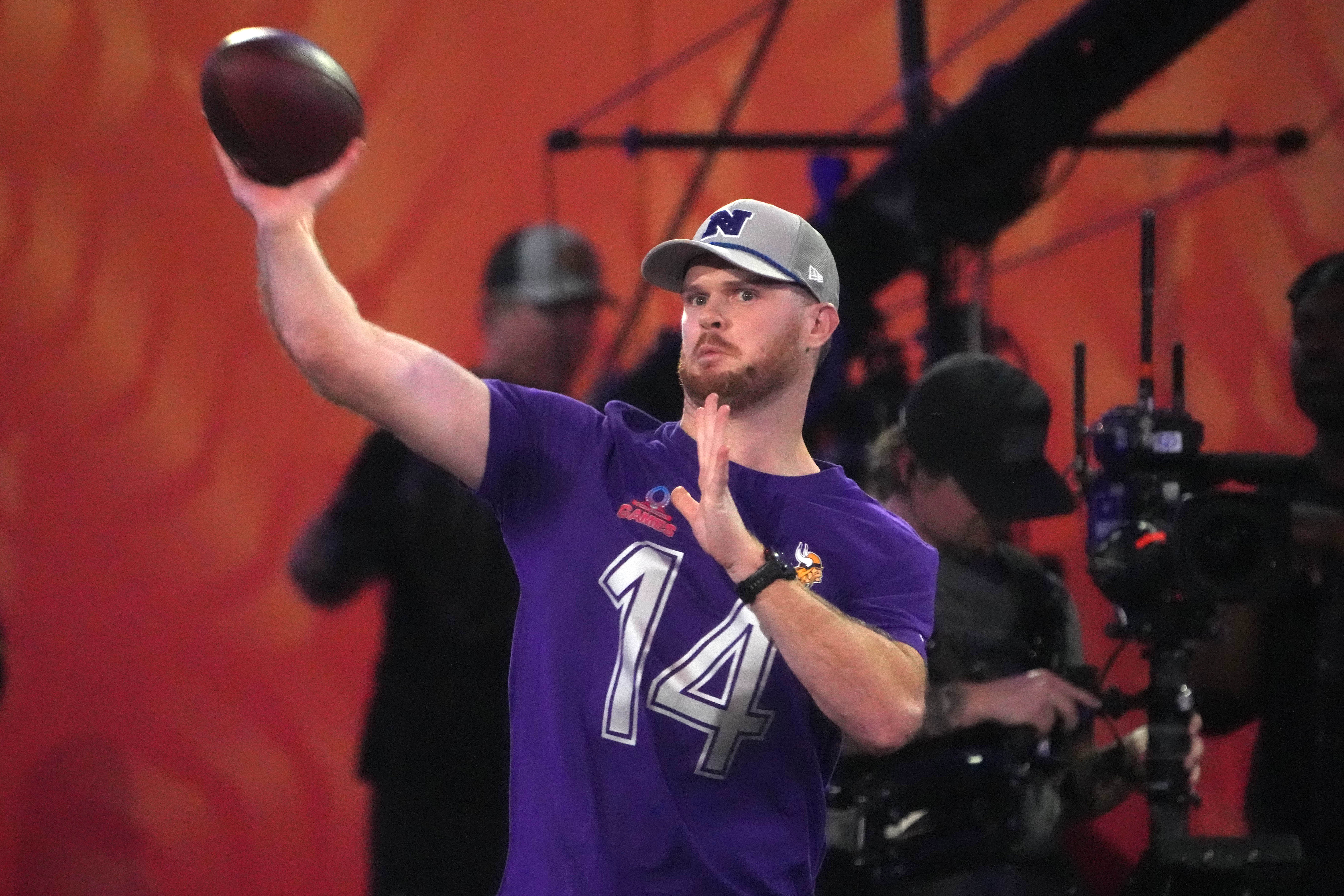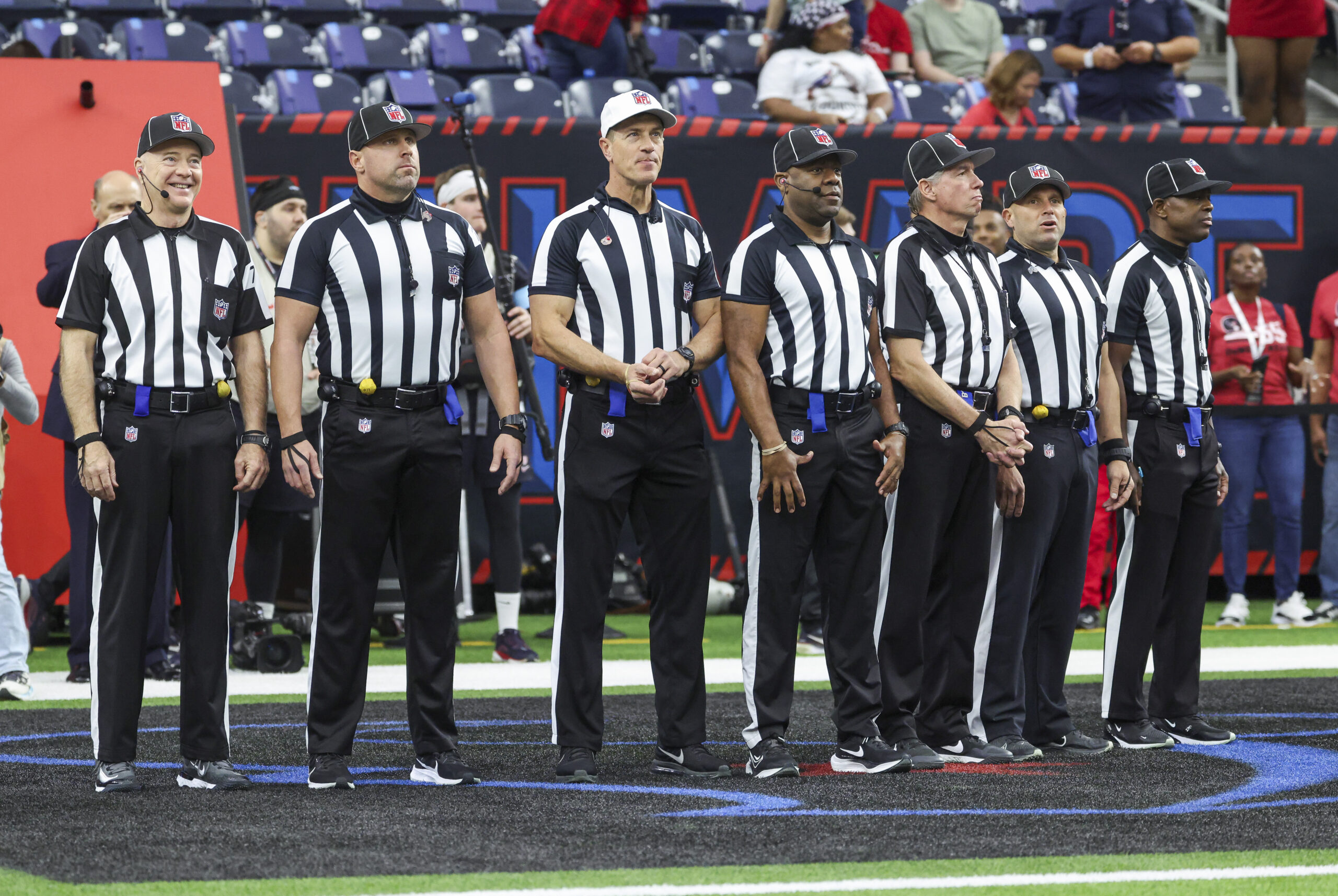NFL Analysis
1/3/25
8 min read
How the 2024 Rookie Receiver Class Has Become One Of the Best

Before the season started, there was already excitement for the offensive players in the 2024 NFL Draft class. It was an offense-heavy draft, with 14 players on that side of the ball drafted before the first defender.
Just looking at the volume of offensive players drafted highly might undersell the quality we’ve gotten from this draft class. We might have five or six good — or at least startable — quarterbacks from the first round alone. That’s already something wild for rookies, as there is typically a steep learning curve at the position, and rarely does everyone hit in some capacity as a rookie.
While it’s great that these quarterbacks have proven they can hang, the production pales in comparison to this rookie group of pass catchers, many of whom have already cemented themselves among the league’s best.
There are 64 wide receivers and tight ends who have run at least 400 routes through Week 17. Four rookies are in the top 15 by yards per route run. By volume and efficiency, this class has already made a significant impact this year.

This is already a special class, given how many receivers have taken a big role in their offenses. Since 2013, as far back as TruMedia has reliable route data, only the draft classes from 2023 (11), 2020 (eight), and 2014 (nine) had more rookies with at least 400 routes run than 2024’s seven. By combined yards per route run (1.85), the qualified rookies in the 2024 class only trail the 2021 class (1.88).
With a week to go in the regular season, the 2024 draft class has four players with at least 2.0 yards per route run. No other class since 2013 has more than two while surpassing the 400 routes cutoff.
Three of the players in this class have already surpassed 1,100 receiving yards, with a fourth on the doorstep (if the Chargers play starters in the season finale).
We've previously broken down Brock Bowers and what he did in his record-breaking rookie season as a tight end, so let’s take a look at these wide receivers and how they’ve stepped in as key pieces for their offense.
2024's Historic Rookie WR Class
Brian Thomas Jr., Jacksonville Jaguars 

Coming into the draft, Brian Thomas Jr. was viewed as an unpolished but projectable super-athlete who might need some time to translate his movement skills into refined route running. That was why he was considered in his own tier below the top three receivers in the class. It did not take any time for that development to kick in. From the start, Thomas has been able to use his combination of size, bend, and speed to create separation and win on any route.
Early in the season, he ran a high rate of vertical routes, 18.5 percent go's, and 10.5 percent posts to stretch the field for Trevor Lawrence. However, the ball was often spread around, and while Thomas led the team in target share with Lawrence on the field, it was only at 19.5 percent.
There were also some near misses early in the season that could have sparked even more production had they hit. The entire Jacksonville offense was inconsistent and static.
Thomas has been more efficient with Mac Jones, partly because the Jaguars have started to spam targets, and he’s taking advantage of them. On 238 routes with Lawrence, Thomas was targeted on 22.3 percent of them. On 225 routes with Jones, Thomas has been targeted on 30.7 percent and has a 31.5 percent target share.
It’s not just the volume of targets that has led to the production. It’s how he’s been used. During the second half of the season, Thomas has been used significantly more on in-breaking routes and has also bumped his rate of out routes.
Those intermediate routes have lowered his average depth of target and, even with Jones at quarterback, have given him more catchable opportunities than the more vertical shots did earlier in the season.

With proper spacing in the middle of the field, Thomas can turn a dig into a big gain. He’s 10th in yards after the catch over expected on in-breaking routes, according to Next Gen Stats. He’s also tied for eighth in receptions of 20 or more yards (16).
— Dan's Clips (@dansfilmclips) January 3, 2025
Of course, he hasn’t lost the ability to win down the sideline and lessened the margin for error for the quarterback on those throws.
— Dan's Clips (@dansfilmclips) January 3, 2025
Thomas is fifth in yards per route run among rookies since 2013, behind Odell Beckham Jr., Justin Jefferson, Puka Nacua, and Ja’Marr Chase.
Ladd McConkey, Los Angeles Chargers 

Injuries and a lack of raw speed and strength knocked Ladd McConkey into the second round, but his plus trait was precise route running, which has translated immediately.
McConkey has played two-thirds of his snaps from the slot, and he’s used his quickness and technical savvy to get open. His play strength also hasn’t been an issue.
He’s faced man coverage on 26 percent of his routes this season and he’s averaging 3.1 yards per route run against it, per TruMedia. He’s second in yards per route run against press coverage (3.7) among players who have run at least 50 routes against it, according to Next Gen Stats.
When lined up in the slot, McConkey became the safety net for Justin Herbert in the middle of the field. But that has evolved in the past few weeks into more of a big-play threat. McConkey has been great on crossing routes, which has opened up plenty of space for him to run after the catch.
— Dan's Clips (@dansfilmclips) December 27, 2024
The Chargers have built off of that, too. On a touchdown against the Patriots in Week 17, McConkey ran a return route off a crosser stem and found open space in the middle of the end zone for a touchdown.
— Dan's Clips (@dansfilmclips) December 30, 2024
McConkey has also been one of the league’s best receivers on in-breaking routes, including those crossers. Per Next Gen Stats, he leads the league in EPA generated on those routes, above No. 2 Amon-Ra St. Brown.
He’s run in-breakers on 14.8 percent of his routes, which is the 10th-highest rate in the league among those with at least 400 routes run. Combine that with his crossers, and that’s nearly 30 percent of his routes.
Given that there has not been a consistently credible outside receiving threat for the Chargers this season, it’s been an even more impressive feat for McConkey to do what he’s done in the middle of the field. Should one come in the offseason, there could be even more space for McConkey to work, but for now, he’s still capable of being the go-to receiver on a passing offense that has found the right balance heading into the playoffs.
Malik Nabers, New York Giants 

Typically, we talk about quarterbacks doing more with less, but that might be the apt description for what Malik Nabers has done this season with the New York Giants. Nabers leads the league in targets while he’s caught passes from Daniel Jones, Tommy DeVito, Drew Lock, and Tim Boyle.
Nabers also has the type of route tree that typically comes with a lack of efficiency in a poorly designed offense. He’s fourth in the rate of hitches and sixth in the rate of go routes.
But Nabers can take the ball and make an explosive play out of anything. Take what he did against the Colts this past week and how his big plays came from three different areas — a screen taken to the house, an incredible adjustment on an underthrown deep pass after he was behind the defender, and a catch and run on a short hitch that goes through multiple defenders.
— Dan's Clips (@dansfilmclips) January 3, 2025
He’s quarterback-proof in a way that should make life easier for whoever is behind center for the Giants next season.
This year, he has a 30.9 percent target share, and if that holds, he would be the first rookie with a target share over 30 percent since at least 2013. Nabers is first among all 2024 receivers in target share, with only Justin Jefferson also over the 30 percent mark (30.3 percent).
Nabers combines the quick-twitch athleticism and unreal smoothness in his movement with more technicality than he was given credit for coming out of the draft.
He’s also been limited by what he’s been asked to do in the offense because of the quarterback play and offensive line quality.
Look at the route tree above, and you’ll see it’s not as full as Thomas' or McConkey's. That’s because the Giants offense has been kept as simple as possible, with the rotating cast at quarterback and no passer with the pocket presence to allow deeper routes to develop consistently. So, his deep shots have to come on those go routes down the sidelines.
In an offense where the other talent is closer to Nabers’, we could see an even wider range of skills displayed, meaning this incredible rookie season might just be the tip of his potential.








